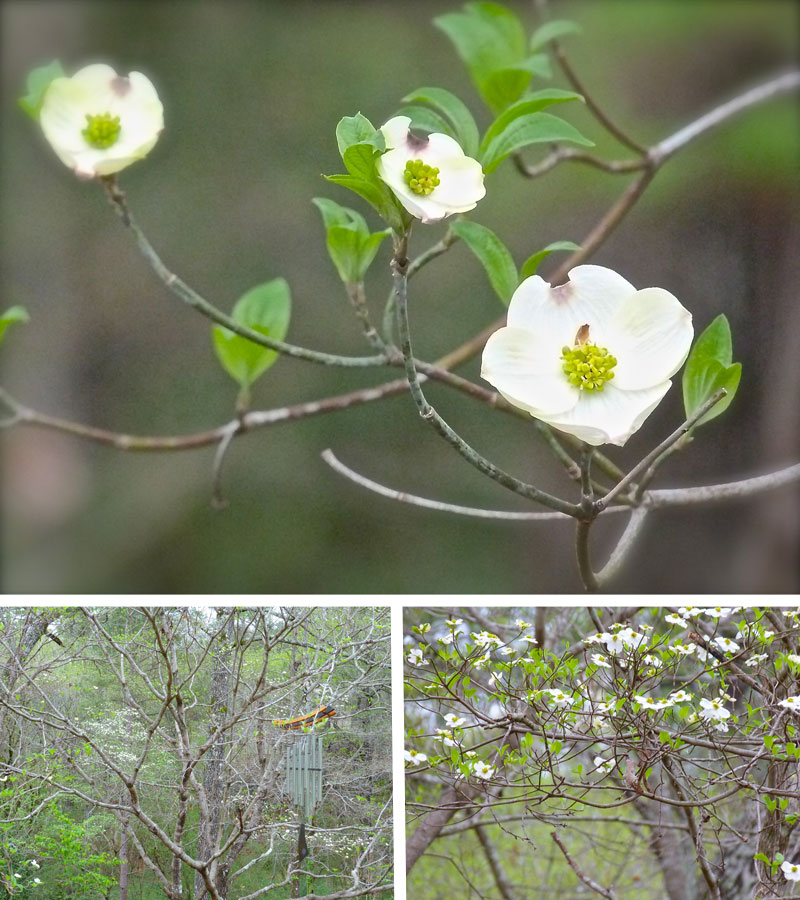Deb's Garden, April 2017
 Sunday, April 2, 2017 at 10:45PM
Sunday, April 2, 2017 at 10:45PM April has always been one of the prettiest months in my garden. We are shaking off effects of last year's severe drought and a couple of mid-March freezes and moving forward. Here are views of Deb's Garden today:
The lawn is bordered by the front garden. The Japanese maple on the left is our 'marriage tree,' purchased soon after Lou and I married 41 years ago:
This view of the front garden was taken near the patio: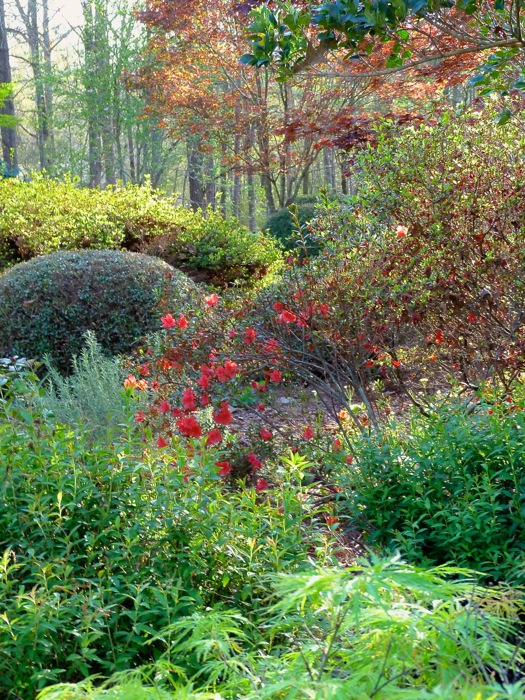
Here is a red Japanese maple with a flowering dogwood, Cornus florida, in the background. This is one of our older dogwoods that survived last year's drought: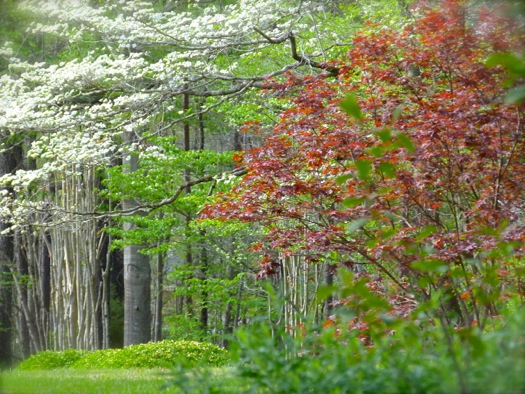
A few days ago we purchased Cornus florida 'Cherokee Brave,' a new variety of pink flowering dogwood bred for vigor and disease resistance. But how many dead dogwoods have we cut down? We plan to buy another Cherokee Brave this week. That makes two, a small beginning, but we are grateful that a number of our dogwoods still survive, including some younger ones. On the left is one of our original white flowering dogwoods. On the left is our new 'Cherokee Brave.'
On the left is one of our original white flowering dogwoods. On the left is our new 'Cherokee Brave.'
If you follow my blog, you know how much I love Japanese maples! Japanese maple 'Aconitifolium' is one of my favorite green ones:

Here are views of assorted other Japanese maples growing in the garden:
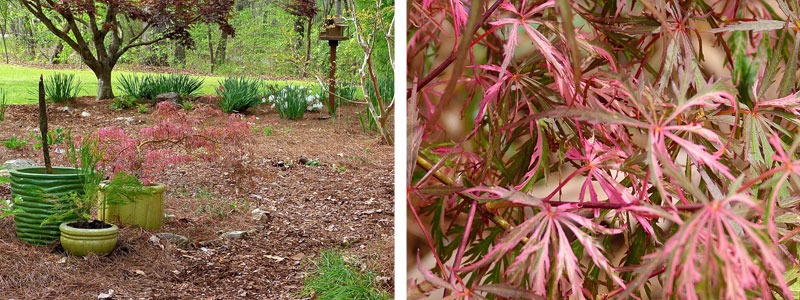

Japanese maple 'Waterfall' grows in the woodland garden:
The blue bridge image is one of my favorite views of the woodland garden through the seasons. Here is April, 2017: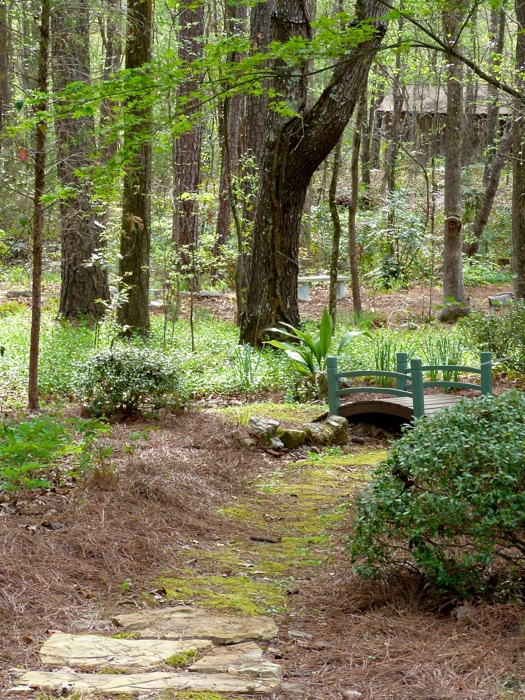
As I walked in the woodland garden today I noticed several butterflies. This Eastern Black Swallowtail was preoccupied with a native azalea and did not mind me taking its photo:
Also in the woodland garden today was an anole lizard resting on the side of a green watering can: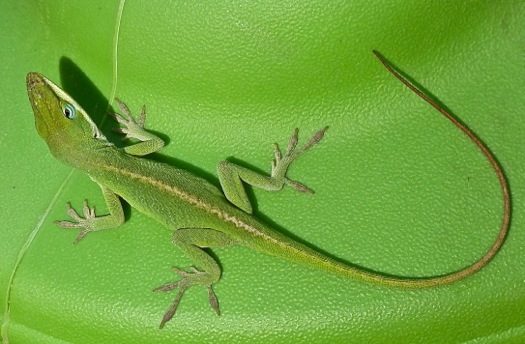
Here are assorted flowers currently blooming in the garden: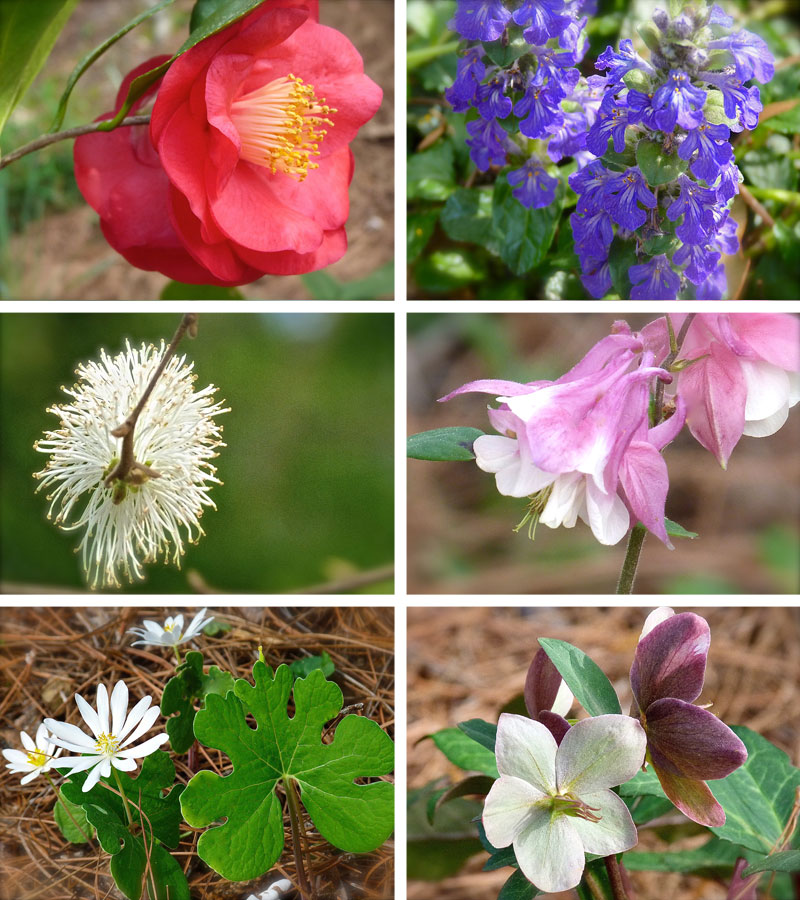 Top row: Camellia japonica 'Gunsmoke'; Ajuga. Middle row: Fothergilla; Pink Columbine. Bottom row: Bloodroot; Hellebores.
Top row: Camellia japonica 'Gunsmoke'; Ajuga. Middle row: Fothergilla; Pink Columbine. Bottom row: Bloodroot; Hellebores.
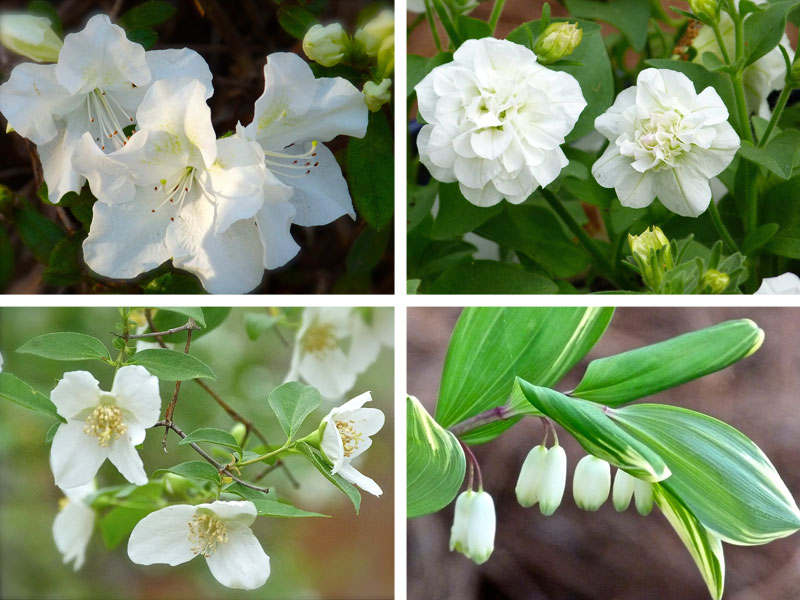 Clockwise from top left: A white Encore Azalea; White double petunia; Variegated Solomon's Seal; Philadelphus (Mock Orange).I hope you enjoyed the tour! Have a great week! Deb
Clockwise from top left: A white Encore Azalea; White double petunia; Variegated Solomon's Seal; Philadelphus (Mock Orange).I hope you enjoyed the tour! Have a great week! Deb

